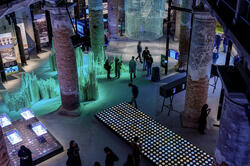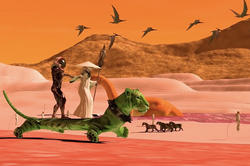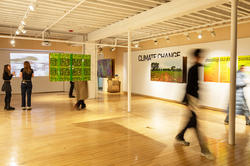SpaceSuits.US and Crossing the Pell, both conceived at RISD, use state-of-the-art technology to explore adaptive reuse.
RISD Presents Design Science Symposium Inspired by the Arthur Loeb Collection
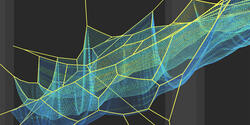
In late September, an international group of thinkers, makers, and educators interested in spatial phenomena, complex systems, and nature-inspired design gathered at RISD for a weekend symposium called Geometry of Uncertainty. Hosted and organized by RISD’s Fleet Library and the Edna W. Lawrence Nature Lab, the event was inspired by the Arthur Loeb Design Science Teaching Collection & Archive. The collection of objects and prints was amassed by late crystallographer Arthur L. Loeb, who used them to help students envision the world at macro and molecular scales and understand key spatial concepts.
“The collection illustrates core principles of pattern, symmetry, and structure found both in nature and the built environment,” says Loeb Fellow Sasha Krieger, who welcomed participants to the opening talk. “Each of the speakers approaches geometry from their own unique perspective, but they’re all asking questions in their work and looking for new connections and possibilities.”
For keynote speaker Janet Echelman, that search for connection began in the early 1990s, when she was preparing to mount a painting and sculpture exhibition in the Indian village of Mahabalipuram as part of her Fulbright engagement. The supplies she had shipped from the US never arrived, and Echelman was suddenly struck by the sight of local fishermen weaving nets on the beach.
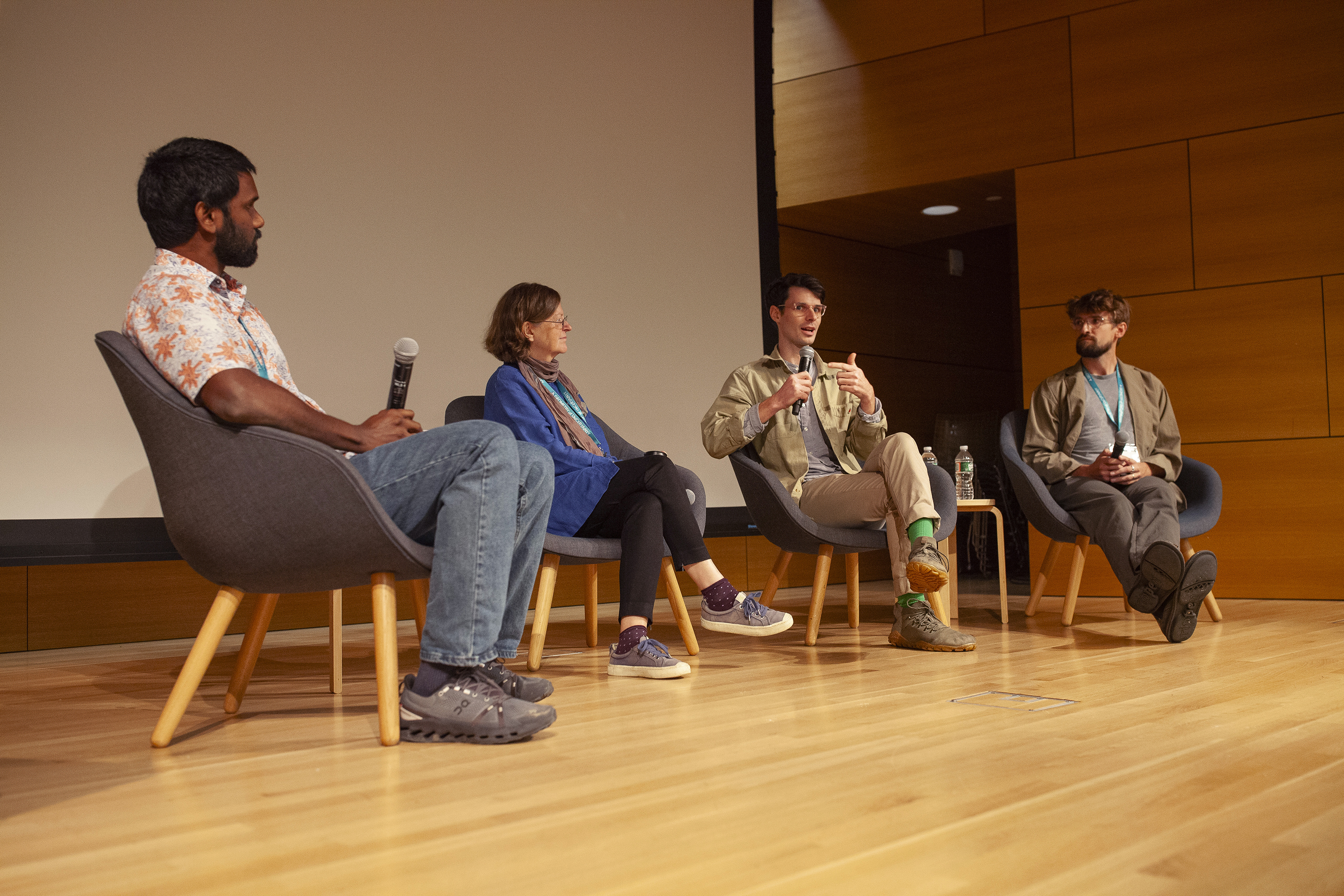
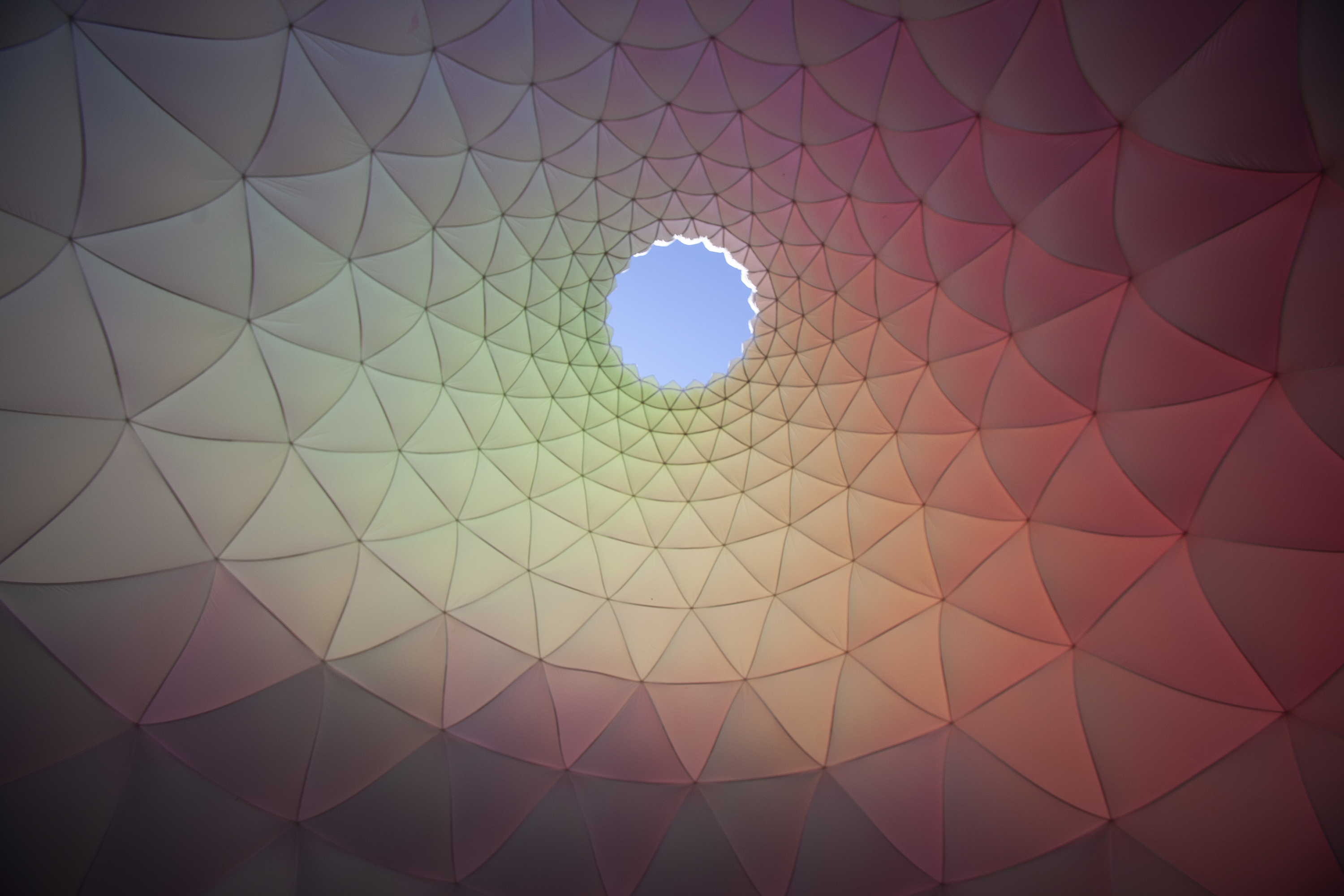
The fire that would light her creative path for the next 30 years had been sparked. Echelman found a new approach to sculpture—using fiber to create volumetric forms in the sky that move with the wind, reflect the light, and welcome viewers into interactive outdoor installations she has since created in cities around the world.
Each piece uses a relevant concrete data set to explore an abstract idea of interconnection. For example, the form of Earthtime 1.26, which Echelman created for the inaugural Biennial of the Americas, reflects data she garnered from the National Oceanic and Atmospheric Administration (NOAA) website showing wave patterns emanating from Chile that affected the entire continent after a 2010 earthquake.
The day after Echelman’s talk, symposium participants were treated to a series of keynotes and panel discussions featuring artists, designers, and scientists who use similar types of spatial thinking and visual mathematics in their practices. Jungian analyst Joseph Cambray discussed the concept of acausal synchronicity and how he uses it to help patients. Architect and researcher Peter Lynch shared his work around singularization and how he applies the notion of “holding together” to his approach to architectural design. Architect, environmentalist and founder of The Sustainability Laboratory Michael Ben-Eli argued that “effectively addressing the multifaceted sustainability challenges threatening every element of our biosphere requires a holistic systems view.”
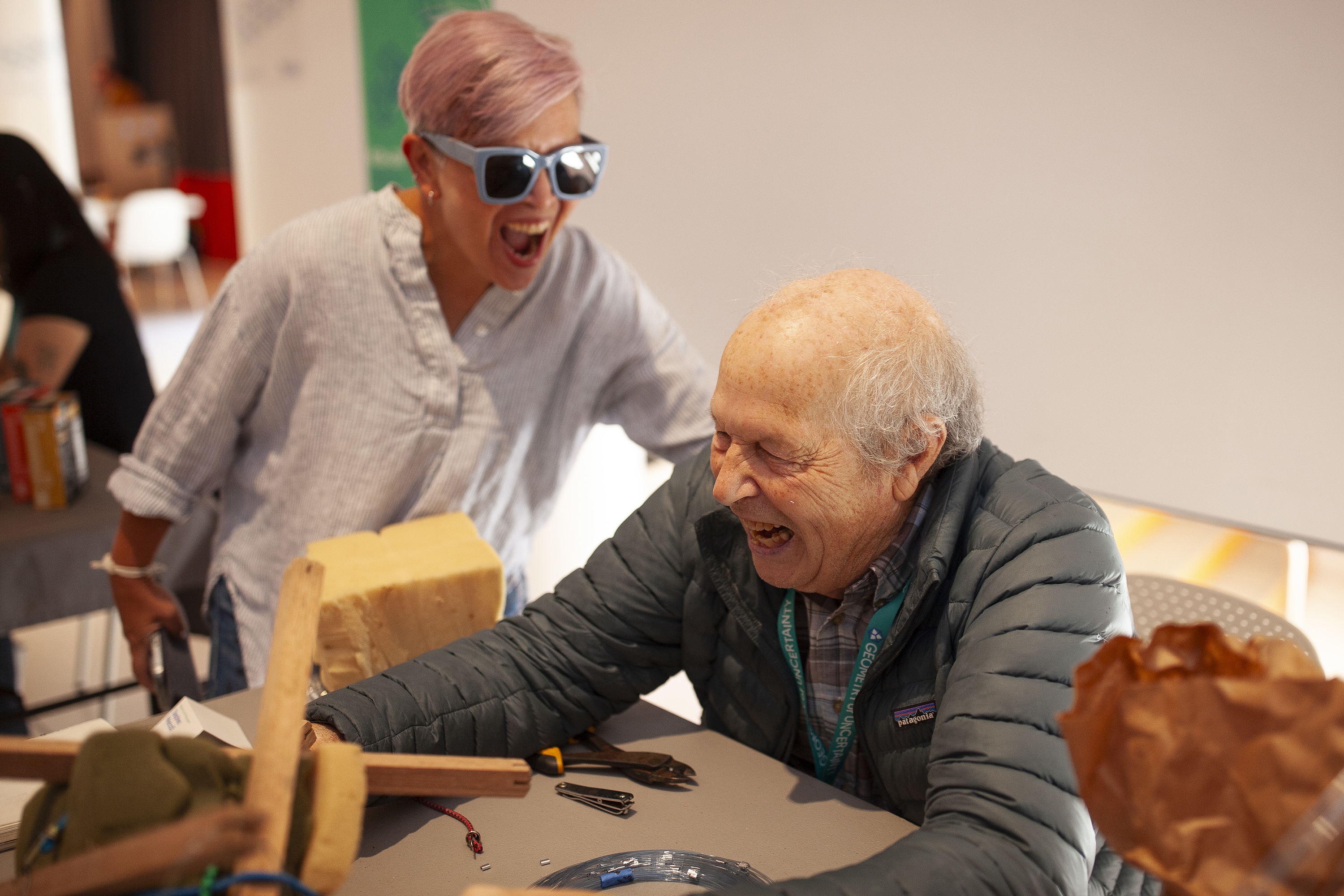
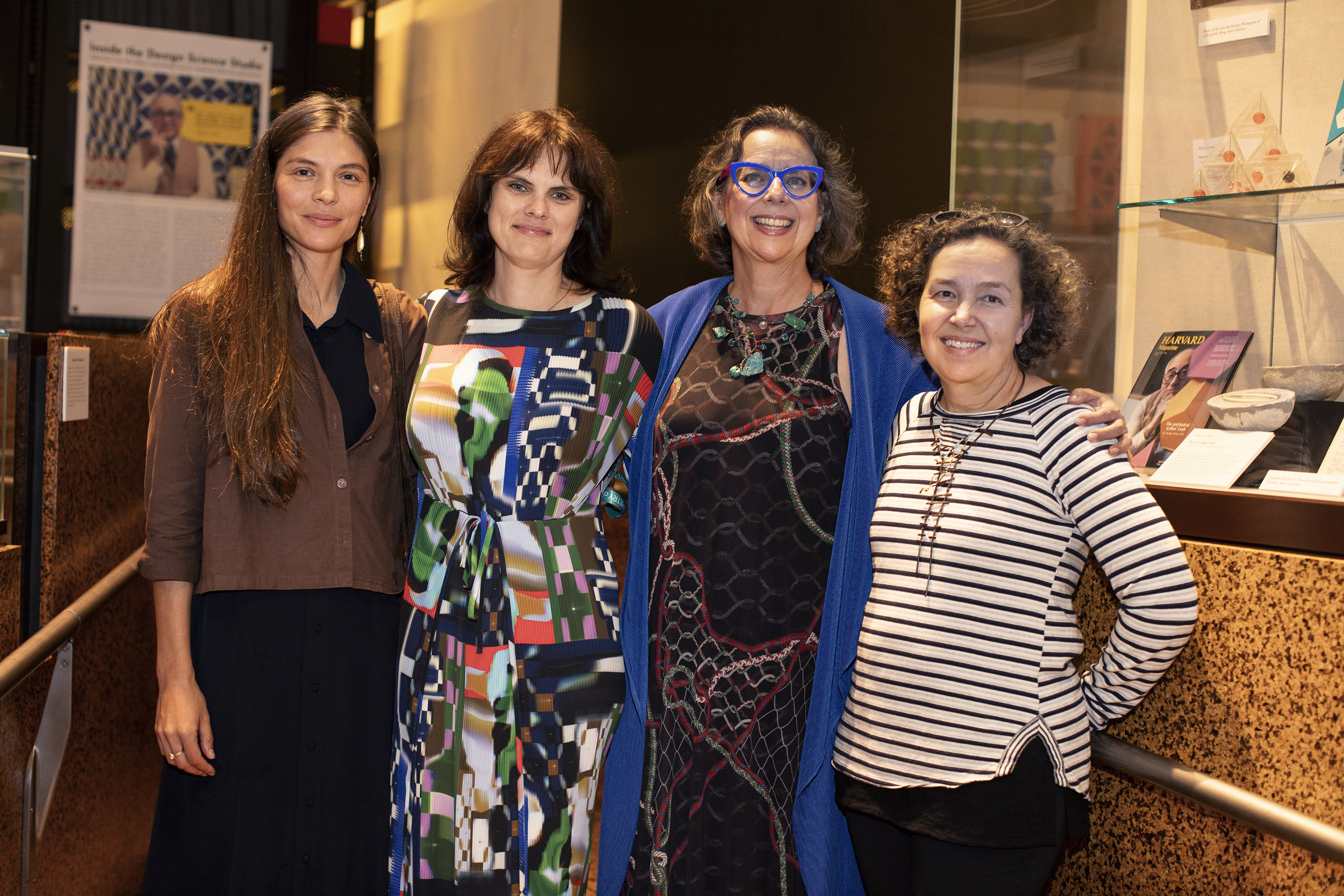
A panel featuring theoretical physicist and cosmologist Stephon Alexander; architectural designer, researcher, and educator Olga Mesa; developmental biologist, artist, and educator Beatrice Steinert; and architect, mathematician, and AI scholar Andrew Witt grappled with the basic concept of design science. “We’re constructing systems by stitching together fragments of processes in an attempt to direct the unruly forces of nature and add a human touch,” Witt noted.
Another panel featured RISD faculty members Jerome Arul 12 ID, Laura Briggs BArch 82, Matthew Muller 14 FD, and Anastasiia Raina, who discussed the varied ways they use the Loeb Collection in their studios and classrooms. “I begin by asking the students to weave tetrahedrons and other forms,” Muller said. “I encourage them to start assembling things before introducing any scary science words.” Arul is also devoted to Loeb’s teaching tools. “The great thing about the collection is that it’s tactile,” he noted, “which makes the learning so much more tangible.”
“Effectively addressing the multifaceted sustainability challenges threatening every element of our biosphere requires a holistic systems view.”
The symposium also provided opportunities for hands-on learning in the Nature Lab and the sharing of ideas via a maker’s fair featuring a wide array of geometric models and creations.
“Embracing uncertainty can spark creativity and lead to a nuanced understanding of the world,” Krieger explains. “It can help us navigate complex systems and better respond to social and environmental challenges.”
Top image: Remembering the Future (2025) by keynote speaker Janet Echelman, who uses concrete data to create abstract forms reflecting the interrelation of all things.
Simone Solondz / photos by Ryan Conaty
October 14, 2025
